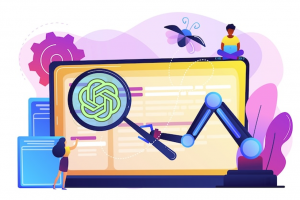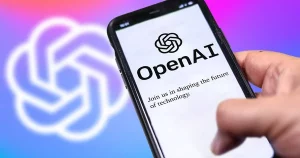In a whirlwind of digital innovation, OpenAI has made a striking move by releasing GPTBot, a web crawler designed to navigate the vast landscape of the internet. While this endeavor aims to bolster AI training data, it comes with a storm of ethical debates & questions about consent. Join us as we delve into the world of GPTBot and the ripples it’s causing across the online realm.
Also Read: Are Plugins and Web Browsing in ChatGPT of Any Use?

Crawling with Controversy: OpenAI’s GPTBot Unveiled
Amidst debates and concerns surrounding web scraping without proper authorization, OpenAI has unveiled GPTBot, a digital explorer with the task of autonomously crawling websites. While raising eyebrows, this initiative aims to collect publicly available data to enhance AI model training. OpenAI promises a transparent and responsible approach, but not without its share of ethical dilemmas.
Also Read: All Your Online Posts Now Belong to the AI, States Google

The Purpose Behind GPTBot: Training AI Models Responsibly
OpenAI has laid out its intentions for GPTBot in its documentation. The bot is programmed to sift through web content, filtering out paywall-protected sources. It also steers clear of personally identifiable information (PII) and content violating its policies. The company contends that GPTBot’s role is to contribute to the evolution of AI systems’ accuracy and capabilities, paving the way for a smarter future.
Also Read: How to Build a Responsible AI with TensorFlow?
Cautious Steps: Enabling and Disabling GPTBot’s Access
Website owners are at the helm of the GPTBot’s interaction with their platforms. While OpenAI’s web crawler can be harnessed to gather data, website owners have the autonomy to prevent GPTBot’s access by adding it to their site’s robot.txt file. This unique approach shifts the onus from opting out to opting in, offering website owners more control over their content.
Also Read: 6 Steps to Protect Your Privacy While Using Generative AI Tools

Ethical Quandaries: The HackerNews Discussion
The emergence of GPTBot has sparked heated conversations on platforms like HackerNews, as the ethical ramifications of web crawling take center stage. Critics argue that OpenAI’s approach lacks adequate moderation and transparency, creating derivative works without proper attribution. The company’s silence about the websites utilized to build its models only adds to the controversy.
Also Read: ChatGPT Makes Laws to Regulate Itself
Trademark Clues and AGI Ambitions: A Sneak Peek into OpenAI’s Strategy
OpenAI’s moves in the AI landscape seem far from arbitrary. The company’s trademark application for ‘GPT-5’ hints at developing a more advanced GPT-4 iteration, possibly inching closer to the realm of Artificial General Intelligence (AGI). Reports suggest that AGI is OpenAI’s ultimate goal, and GPTBot is crucial to gathering the essential training data for this ambitious endeavor.

Unraveling the Classifier: AI Text Detection Reconsidered
In a twist of events, OpenAI has recently discontinued its AI Classifier for detecting text generated by GPT models. This shift raises questions about OpenAI’s strategy and future direction regarding content monitoring and control.
Also Read: OpenAI’s AI Detection Tool Fails to Detect 74% of AI-Generated Content
Our Say
OpenAI’s release of GPTBot web crawler may have set a new course for AI development, but it has also ignited an ethical firestorm in its wake. As conversations about web scraping and content usage continue to evolve, how OpenAI addresses these concerns remains to be seen. GPTBot’s journey is fraught with challenges, but its impact on the AI landscape could be profound, reshaping the boundaries of data access, transparency, and consent.




